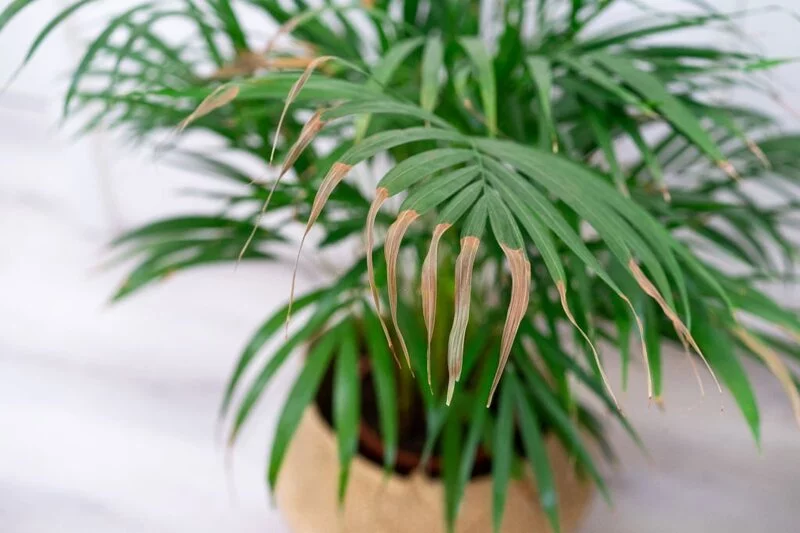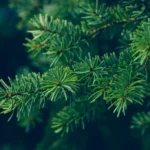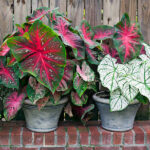Hello, fellow green thumbs! If you’re here, you’re probably a fan of the majestic beauty of palm plants. Their graceful fronds and distinctive charm can turn any space into a tropical oasis. However, like all things bright and beautiful, they sometimes face troubles too. You might be noticing your palm’s lush green leaves turning yellow and even brown. If you’re thinking, “Why is my palm plant turning yellow and brown?” and are looking for ways to revive your leafy friend, you’ve come to the right place. This article aims to guide you through the why’s and how’s of this common palm problem.
- Contains magnesium, iron and manganese to grow lush palms, cyads and tropical plants
- Prevents yellowing and curling of fronds
- Feeds up to 3 months
- Guaranteed not to burn when used as directed
- Takes the Guesswork Out of Feeding!
Palm Plants: A Basic Guide
Let’s take a moment to get to know our tall and leafy companions a bit better. Picture a healthy palm plant. Its long, graceful leaves reach out in all directions, creating a beautiful fan-like pattern. These leaves, or fronds, are a vibrant green color and seem to bring a piece of the tropics right into your home.
However, it’s natural for palm plants to experience a change in leaf color as part of their growth process. The older, lower fronds might turn yellow and then brown as they age and eventually die off – that’s completely normal. But if you’re seeing lots of leaves turning yellow or brown, or if the upper, younger fronds are changing color, your palm might be waving a red flag at you. Don’t worry though, we’re here to help you decode these signals and bring your palm plant back to its vibrant self!
Common Reasons Why Palm Leaves Turn Yellow and Brown
Just like we feel under the weather when something’s not right, plants have their own way of signaling distress. For palm plants, one of these signs is yellowing or browning leaves. Here are some of the common reasons:
- Improper Watering: Too much or too little, both are problematic. Overwatering can lead to soggy soil and root rot, while underwatering can leave your plant thirsty and stressed. Either scenario can turn your palm’s leaves yellow or brown.
- Nutrient Deficiencies: Palms are pretty picky when it comes to their diet. If they’re not getting enough nutrients, particularly magnesium or potassium, they might show their unhappiness through their leaves.
- Incorrect Light Conditions: Palms love bright, indirect light. Too much direct sunlight can scorch the leaves, turning them brown, while too little light can lead to yellowing.
- Pest Infestations or Disease: Unwanted guests like spider mites or conditions like leaf spot disease can also cause your palm leaves to discolor.
- 100% NATURAL: No additives or chemicals, ideal for potted palms, starting, repotting, or amending soil
- USES: For successfully growing many types of palm plants and trees such as Sago Palms, Pygmy Date Palms, Ponytail Palms, Majesty Palms, Cat Palms, Parlor Palms, and Fan Palms.
- BENEFITS: drainage, aeration and nutrient retention
- Ingredients: Peat moss, pumice, horticultural perlite and lime
- Size: 8 quarts (enough for a big 12-inch pot)
Solutions to Restore Your Palm Plant’s Health
So, what can you do to turn things around for your yellowing or browning palm plant? Here are some solutions:
- Perfect Your Watering: Stick your finger about an inch into the soil. If it’s dry, it’s time to water. If it’s wet, wait a bit. The goal is to keep the soil consistently moist but never waterlogged.
- Feed Your Plant: A balanced, slow-release fertilizer designed for palms can help tackle nutrient deficiencies. Remember, feeding is not a daily thing but rather a monthly or bimonthly task, depending on the specific fertilizer’s instructions.
- Adjust the Light: Move your palm to a location where it can enjoy bright, indirect light. If it’s getting scorched by the sun or sitting in a dark corner, it’s time for a change.
- Handle Pests and Diseases: Keep a close eye on your palm for any signs of pests or disease. If you spot any, treat them promptly using suitable methods. This could include natural remedies, specific pest control products, or even consulting with a plant expert if the issue is severe.
Remember, the key is patience. It might take a bit of time for your palm to recover fully, but with consistent care and attention, you’ll see those luscious green leaves again!
Prevention and Long-term Care for Palm Plants
Now that you know how to handle a yellowing or browning palm plant, let’s talk about how to prevent these issues in the first place. Just like how eating healthy and regular exercise keep us in good shape, preventive care can do wonders for your palm plant’s health.
- Establish a watering routine, adjusting as needed depending on the season and your home’s climate. The soil should be moist, but not waterlogged.
- Provide your palm with a balanced, slow-release fertilizer every month or two to ensure it’s getting all the nutrients it needs.
- Position your palm in a bright spot where it can enjoy indirect light. If you see the leaves getting scorched or pale, it might be time to adjust its location.
- Regularly inspect your palm plant for pests or signs of disease. Catching problems early can make treatment much more manageable.
Remember, every plant has its unique personality and needs. Learning to understand and cater to these needs is the secret to successful gardening.
Conclusion
With these tips and insights, you’re now well-equipped to address the issue of your palm plant’s leaves turning yellow and brown. Gardening, just like any other relationship, is about understanding, patience, and consistent care. So, don’t get discouraged if your plant pal is showing signs of distress. You now have the knowledge to diagnose the problem and work towards a solution. Your journey with your palm plant is a growing experience, filled with shared signals and green victories. Here’s to many more happy, healthy days with your tropical friend! Happy gardening, everyone!






